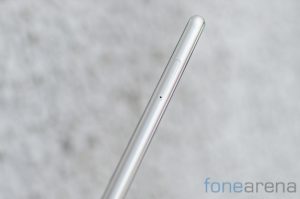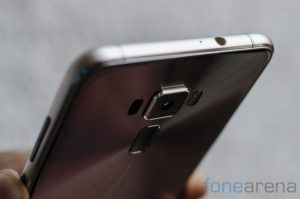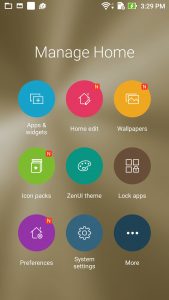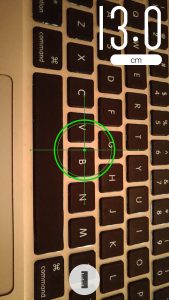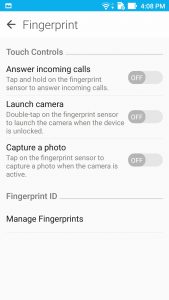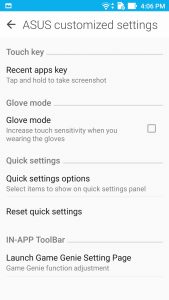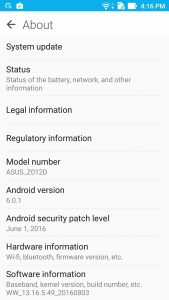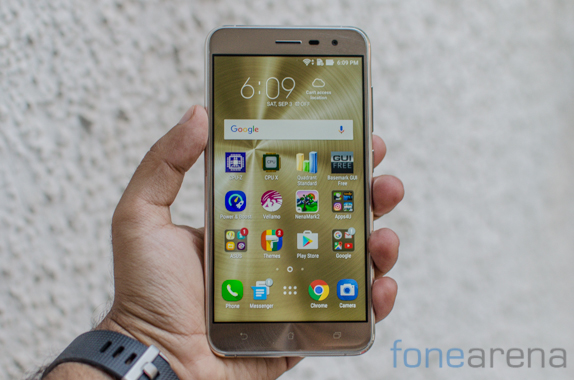
The Zenfone series of phones by Asus have enjoyed an enviable position. A well priced device with well-balanced specifications guaranteed that the first generation was a runaway success. Asus replicated this to a degree with the myriad variants of the Zenfone 2. With the Zenfone 3, the Taiwanese company is taking a very different approach to things. Higher end materials, a greater focus on design has resulted in a decidedly higher price. Will the Zenfone 3 continue to be as appealing to consumers? We find that out in our review.
Zenfone 3 Unboxing
Asus Zenfone 3 ZE552KL Specifications
- 5.5-inch (1920 x 1080 pixels) Full HD Super IPS+ display with up to 500cd/m2 brightness, 2.5D Corning Gorilla Glass 3 protection
- 2GHz Octa-Core Snapdragon 625 14nm processor with Adreno 506 GPU
- 4GB RAM with 64GB storage (ZE552KL), expandable memory with microSD
- Android 6.0 (Marshmallow) with Zen UI 3.0
- Hybrid Dual SIM (micro+nano/microSD)
- 16MP rear camera with dual-tone LED Flash, PDAF, Laser AF, f/2.0 aperture, 6P Largan lens, 4 Stop OIS
- 8MP front-facing camera, f/2.0 aperture, 88-degree wide-angle lens
- Fingerprint sensor
- Dimensions: 152.59 x 77.38 x 7.69mm; Weight:155g
- 4G LTE with VoLTE, WiFi 802.11ac (2.4 and 5GHz) MU-MIMO, Bluetooth 4.2, GPS, USB Type-C
- 3000mAh battery
Design
Where the first two devices were utilitarian, plastic clad handsets, the Zenfone 3 is an entirely different beast. The Glass and Metal body of the phone looks really good and is a marked improvement over anything we’ve seen from the company and for that matter most of the competition as well.
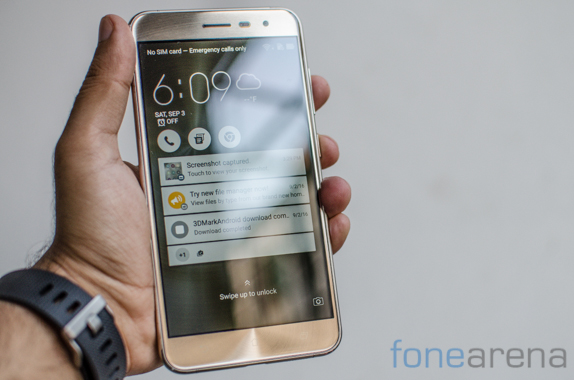
Around the 5.5 inch Full HD display panel runs a brushed metal front. A protective layer of 2.5D curved glass is placed on top of it. Because of the way the glass tapers off at the edges and seamlessly melds into the metallic frame on the sides, it gives an impression of a two color design language. The metallic frame all around has chamfered edges further adding to the design element.
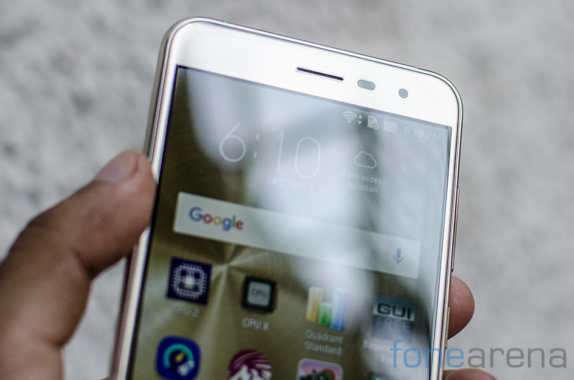
Up above the screen lies the 8MP front facing camera alongside the proximity sensor. Part of the company’s design DNA, Asus still retains capacitive buttons below the screen area. These three buttons represent the back, menu and home keys. Both the volume rocker and the power button are placed on the right hand side and offer fantastic feedback. Like the rest of the body, the buttons too are made of metal. The left side of the phone is where the hybrid SIM slot is placed. Worth noting is that this is the first phone in the Zenfone series to charge over USB Type C. Thankfully though, the phone continues to offer a headphone jack placed at the top.
Earlier on, we mentioned that Asus had massively stepped up the design element of the phone. This is most evident on the rear of the phone. The concentric ring design of the Zenbook has been replicated here alongside the glass coating on top which makes it look absolutely gorgeous. The downside of the glossy surface is that the back is a complete fingerprint magnet. Additionally, the rear of the device is very slippery. The camera module sits proud at the top and juts out from the body surface by a millimeter or two. Flanking it on either side are the laser autofocus and LED flash modules. Below, lies the rectangular and rather glossy fingerprint reader.
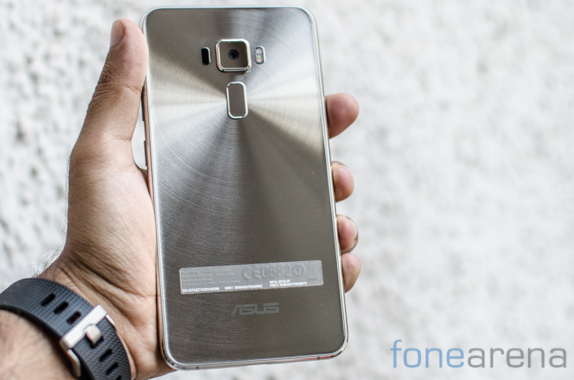
The phone measures 152.59 x 77.38 x 7.69mm making it very slim other than the protruding camera module. The 155 grams weight is slight hefty for the size of the phone but it makes the Asus Zenfone 3 feel well built rather than heavy.
Software
Perhaps the achilles heel of the Zenfone 3, the phone still runs a very bloated version of Android 6.0 dubbed as Zen UI 3.0. Right from the lockscreen to the pre-installed apps, there have been customizations all the way through. In a recent conversation with Peter Chang of Asus, we were told that users quite enjoyed this implementation, it’s certainly a little hard to believe though.
The lockscreen shows the time, date, weather and notifications. You can also have three shortcuts placed here while swiping up from the corner reveals the camera module. Drop into the homescreen and you get access to the all the apps and widgets placed here. The homescreen can be modified via additional icon packs, themes and more. Additionally, unlike recent devices, you can tap a shortcut on the homescreen to enter the second level app drawer.
Asus has taken upon itself the task of providing users an app for almost every use case possible. From file managers to task lists to even a laser ruler! Removing Google’s apps from the equation, we counted a whopping 26 pre-installed apps. For what it’s worth, a couple of these can be uninstalled. You can disable most of the others but they still do end up occupying space on the phone.
There’s also a full range of gestures and shortcuts built into the device that stretch from double tapping the homescreen to enter one hand mode, long pressing the app switch button to take a screenshot as well as double tapping the fingerprint reader to open up the camera. There’s more strewn all around and they do add to the ease of use. As we said earlier, this is a very heavily customized version of Android but the additions are quite useful for the most part.

For performance and gaming junkies, a Mobile Manager and Game Genie app are built into the device. The former offers some useful features like a permissions manager, data usage tracker and a security manager all in one single place. You can also use it to clear out RAM but that’s not really advised on Android. The Game Genie app as the name suggests is designed entirely for hardcore gamers. You can use this app to capture your screen while playing and also live stream to YouTube or Twitch. A very cool feature here is that you can overlay a live video from the front facing camera over the stream from your screen while broadcasting to a social platform.
From an interface perspective, the software on the Zenfone 3 is quite inoffensive and is generally about as good as the competition while offering a couple of additional options. What we didn’t appreciate was the copious amount of bloat pre-installed on the device, something that the average user wouldn’t be able to get rid off.
Performance
Powered by a 2GHz Octa-Core Snapdragon 625 14nm processor with Adreno 506 GPU, Asus is taking a more balanced approach towards performance on the Zenfone 3. By eschewing the top end Snapdragon 820 processor, the phone manages to avoid the heating and battery related issues we’ve heard of on the chipset while also managing performance that is quite positive. The processor is paired with 4GB of RAM that is sufficient for regular multitasking. Yes, the competition in the price category is starting to equip devices with 6GB of RAM but realistically there is very little to gain from this at the moment. On a day-to-day basis, there was little to complain from a performance perspective. Navigating through the interface and diving into apps, everything remains as smooth as can be expected. We observed a couple of dropped frames when using the Game Genie app to capture video from the front camera while playing games but even that wasn’t much of a deterrent. We’ve included some benchmarks below to give you a better idea of comparative performance.

With a Snapdragon 625 onboard, the Zenfone 3 has performance thats about par with the Redmi Note 3. The phone scores just under 62,000 points in the AnTuTu benchmark.
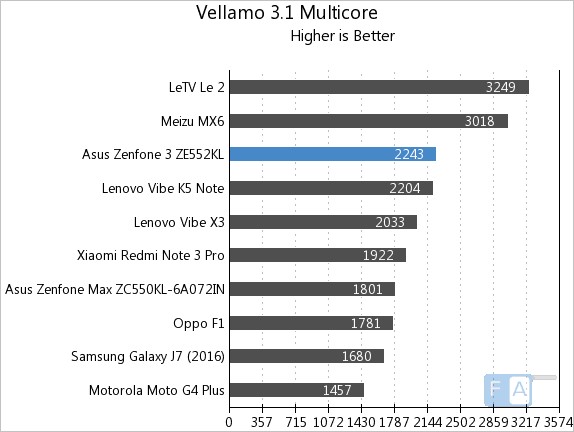
In the Vellamo Multicore benchmark, the phone scores 2243 points.
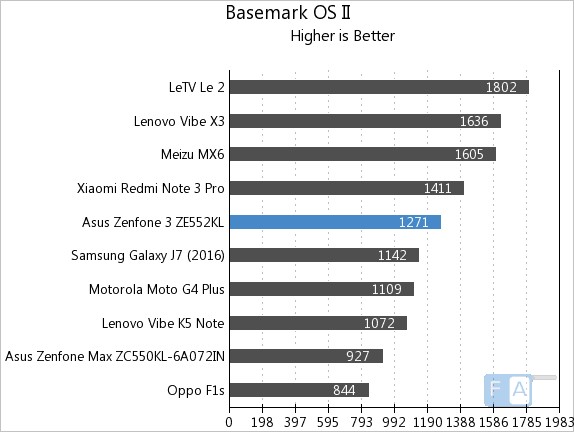
With a score of 1271 points, the Zenfone 3 places right in the middle of our test bench and once again, behind the Redmi Note 3.
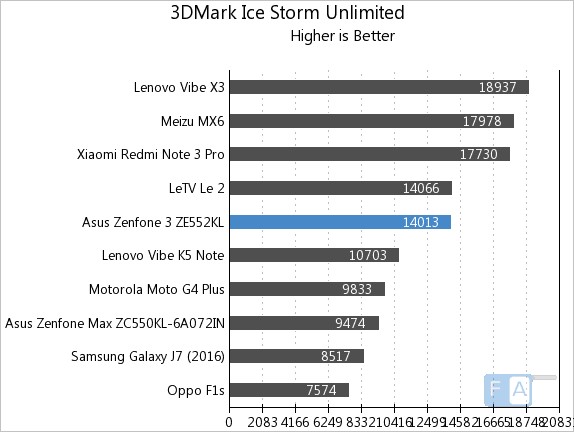
Lastly in the 3D Mark benchmark, the phone scores 14013 points. Once again, synthetic benchmarks aren’t entirely indicative of performance and we never really had issues with the phone throughout our use. That said, there is a point to be made about the fact that a handset that costs half that of the Zenfone 3 manages similar or even better performance.
Camera
A lot has been said about the camera on the Zenfone 3. Looking at the specifications, users get a pretty nifty package here. The 16MP rear camera is paired up with a dual-tone LED Flash, PDAF as well as Laser AF, f/2.0 aperture, 6P Largan lens and 4 stop OIS. Clearly, the hardware is good enough to deliver very competitive camera performance. The real difference lies however in the software and how well it processes the data obtained from the camera sensor. For better or worse, the Zenfone 3 continues the camera quality precedent set by the first and second generation Zenfones.
Images are generally pleasing but the tones tend to veer towards cooler shades. It is possible to adjust the white balance here so you should be able to get the colors to your liking. In our testing though, we’ve stuck to the auto mode as that’s what most casual users will depend on.
The one thing that really stuck out for us was the extremely quick focussing speeds on offer. A combination of Phase Detection Auto Focus (PDAF) and laser based autofocus means that the phone manages to keep objects tack sharp in focus and tracks them well too. Low light shots aren’t too bad from the Zenfone 3’s camera but you’ll really want to stand still for that. Additionally, there remains a modicum of noise all around and particularly in the shadows.
Day light photographs are certainly above average. The phone struggles with resolving highlights and has a tendency to blow them out. Think clouds and a bright sky, if you end up metering an object instead, the shot in most cases ends up with a blown out sky. The persists in night shots as well in which case there is fairly heavy blooming on lights. Yes, the camera on the Zenfone 3 is pretty good but it comes with certain limitations and we are rather disappointed that Asus still hasn’t been able to sort these out despite the fact that users have consistently pointed out these specific issues over multiple generations of their hardware.
Display
The Full HD screen on the Zenfone 3 has a pixel density of approximately 400 ppi. The panel being used here is termed as a Super IPS+ display though it appears to be just a really bright IPS panel. No harm done though as the display really is very bright and vibrant.
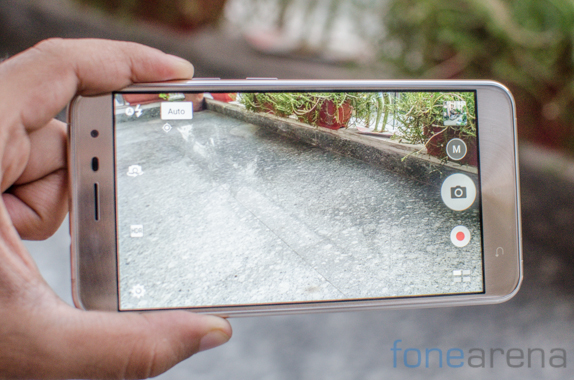
We had no issue at all viewing the Zenfone 3 outdoors and even in bright sunlight despite the highly reflective nature of the glass covered display. Yes, the resolution could’ve been higher but a 2K display on a 5.5 inch frame still isn’t critical. Icons and text look sharp and watching media on the display is an enjoyable experience.
Connectivity & Battery Life
From a connectivity perspective, the Zenfone 3 comes well equipped with most of the options you’ve come to expect. There’s 4G LTE support with VoLTE, WiFi 802.11ac (2.4 and 5GHz) MU-MIMO as well as Bluetooth 4.2 and GPS. We’ve already mentioned that the handset charges over USB Type-C. The phone is a hybrid SIM device so you have an option of expanding built-in storage should you choose to eschew the 2nd SIM slot. Talking about storage, there’s a little under 51GB available out of the 64GB built into the handset. All that built in bloatware definitely takes a toll here.
In terms of battery life we weren’t expecting much with just a 3000 mAh unit built-in but ended up being pleasantly surprised. The Zenfone 3 handily lasts a full day of use and then some. The phone charges up very quickly so it shouldn’t be a hassle to top it off if you need some extra juice to power through a couple of extra hours.
Conclusion
The Zenfone 3 is without a doubt the best in the series so far but with a renewed focus on design and on portraying the handset as a premium device, it appears that Asus has taken quite a gamble. The hardware looks great and so does the screen. We also observed that battery life was absolutely amazing.
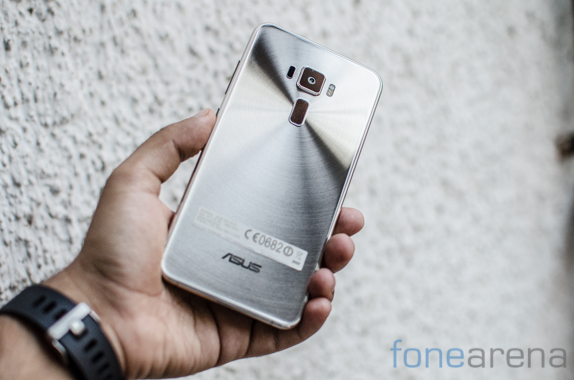
All of that does not take away from the fact that there is a significant amount of bloatware on the phone. Additionally, the camera is strictly average. Most importantly though, the phone brings mid range specs at a price point that rivals the category leading OnePlus 3. At a price point of Rs. 27,999, it becomes a little hard to recommend the Zenfone 3 unless you absolutely value it’s design identity. For everyone else, the OnePlus 3 is probably the better option.
Pros
- Great design & Build quality
- Good battery life
Cons
- Bloatware
- Mid-Range specifications

